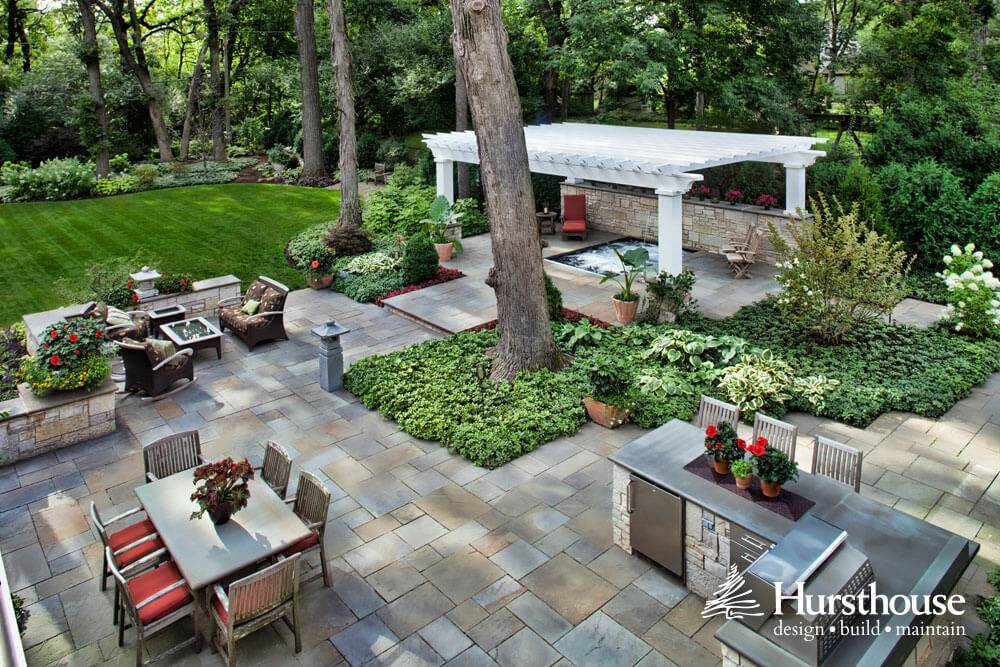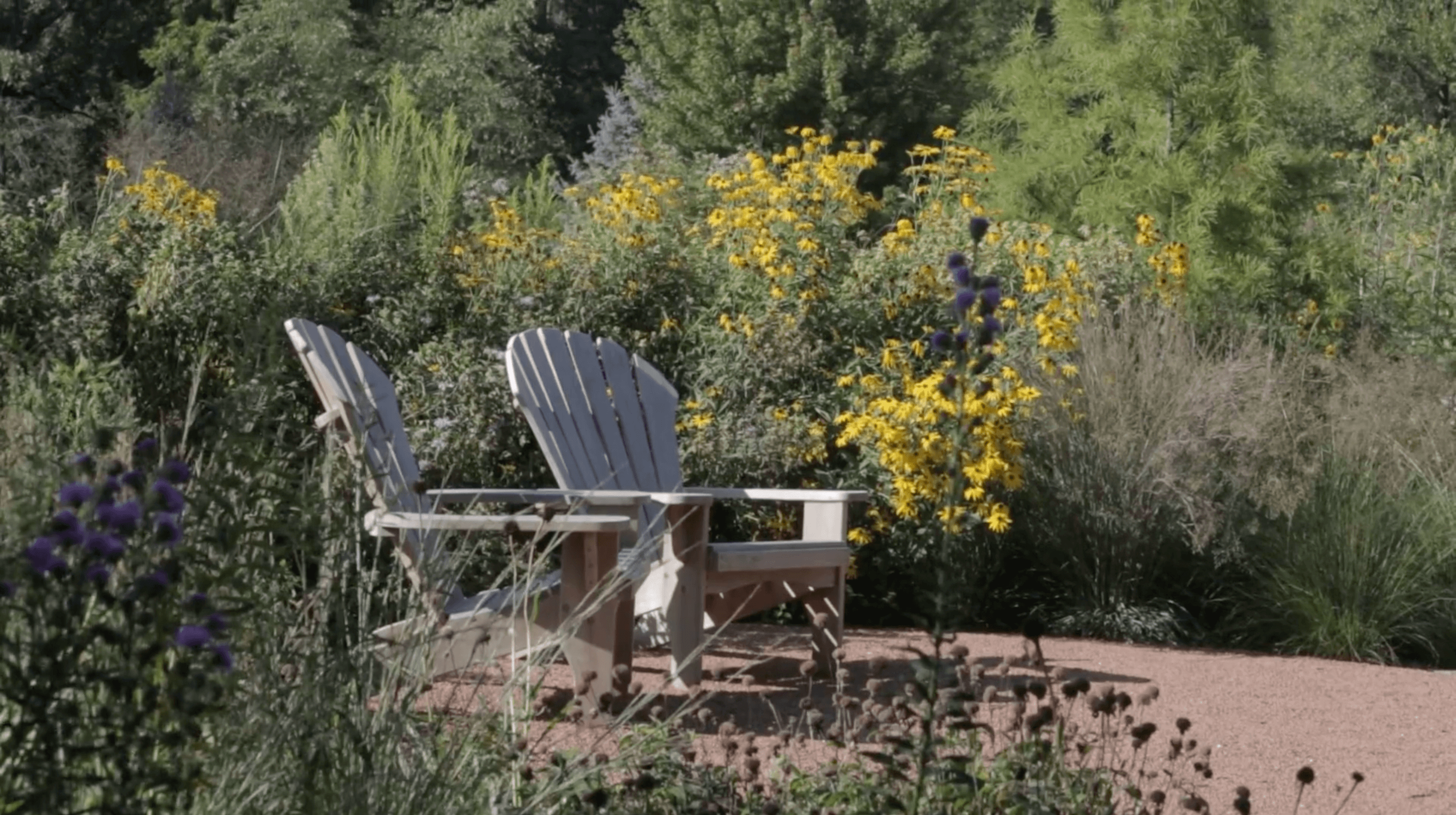Now that holiday parties and get-togethers are finished, our team likes to brainstorm various ways to create outdoor spaces that make entertaining comfortable and fun. Perhaps you attended an event where you’re bumping elbows and edging around guests while you try to get to the appetizers or the dining table. In other situations, you may have enjoyed plenty of elbow room and some extra space on the couch so you felt comfortable and relaxed. It’s all in the design.
Patios function like their indoor counterparts—living rooms and kitchens. If they’re cramped, they’re uncomfortable to use let alone enjoy. With that in mind, we design these outdoor spaces to accommodate small group conversation and interaction as well as relaxation. We also like to see spaces designed to hold larger groups for parties and other social gatherings when that serves our clients’ needs.
When creating urban gardens in Chicago and for small suburban properties, we’re often faced with cramped spaces. In these situations, homeowners often lament the lack of privacy. The ideal outdoor space allows for privacy and provides views onto an attractive element, such as a small flowering tree, an ornamental trellis, or a diminutive water feature, as well as direct access to inside the house.
Good design does not involve stuffing a multitude of plants into a small space or adding too many containers. Less is more in a compact space.
“I think a lot of designers make mistakes in small spaces,” says designer Jeff True of Hursthouse, Inc. Because the lot is small, “They think you need a small patio, a small lawn, small steps and small pots with small plants. It’s kind of the opposite of what they should be thinking. You want it to feel larger and very comfortable and to be very selective in what you oversize.” That might result in using fewer components and plants. “You want people to say, ‘wow!’ look at all the space—because you’ve been intentional about upsizing certain elements.”
True finds that older patios are often too small or poorly placed. “We find that our clients may have a patio, but they never spend time on it because it’s in full sun or they can barely get their table and chairs onto it. I’ve never had a client say the patio is too big.”
Sufficient space, adequate privacy, decoration (plant pots or architectural elements) and furnishings should come together to make your outdoor living space comfortable, pleasurable and useful. And, a well-designed patio can enrich your home’s exterior for years to come.
It’s All About Size
One of the first things Hursthouse designers do is establish the correct proportions and size so the deck or patio functions the right way. Overall size is generally determined based on the anticipated number of people who will use the space. In addition, we take into consideration the required furniture, such as a patio table, chairs, chaise lounge, portable or permanent grill, fire pit or fountain.
Functional size requirements vary, but a rule of thumb tells us that a person standing alone on a patio needs about 5 square feet of space, while people standing in conversation in the same place need about 8 square feet per person to feel comfortable, not cramped.
For example, a small round patio table and four chairs needs as much as a 10’ by 10’ space or larger. The “walk-around” space is also important. For comfort, an extra 2 or 3 feet of paving around the patio furniture allows you to stay on the paving rather than stepping onto the lawn or into planting beds.
For one Hursthouse makeover, the existing patio furniture was perched precariously on a slope at the top of the lawn in back of the house. “It was a great place if you wanted to sled,” Bob Hursthouse said. “If you leaned back in your chair on the patio, you’d end up at the bottom of the hill.” Needless to say, it was rarely used until the slope was leveled and the patio expanded.
In some cases, a “seat wall” may be used around a patio to reduce the spatial demands of more furniture. A seat wall offers a place not only to sit, but to place beverages or plates or hold a large planter filled with colorful flowers. These features are important in smaller patios where it takes detailed space planning to ensure all the homeowners’ needs are met.
Attention to Detail
Outdoor spaces are rooms with views—sometimes good views that look out and onto a neighboring garden. Other times, views need to be screened with trellises or plants to provide privacy or to block the neighbor’s garage or utility areas. In planning, we orient the patio to take advantage of the best views.
Like indoor rooms, a patio or deck can be decorated with furnishing and planters.
“It’s a way for us to bring more color into the space without planting in the ground. Containers are the finishing touches.”
The designed space should be comfortable to use during the day and at night. A small fire pit or fireplace can make the spot enjoyable even on cold winter nights. To get the most out of an outdoor space, Hursthouse designs often include exterior lighting. This not only creates a dramatic look at night in the garden but allows you to enjoy the space from indoors, even when the snow is falling.

